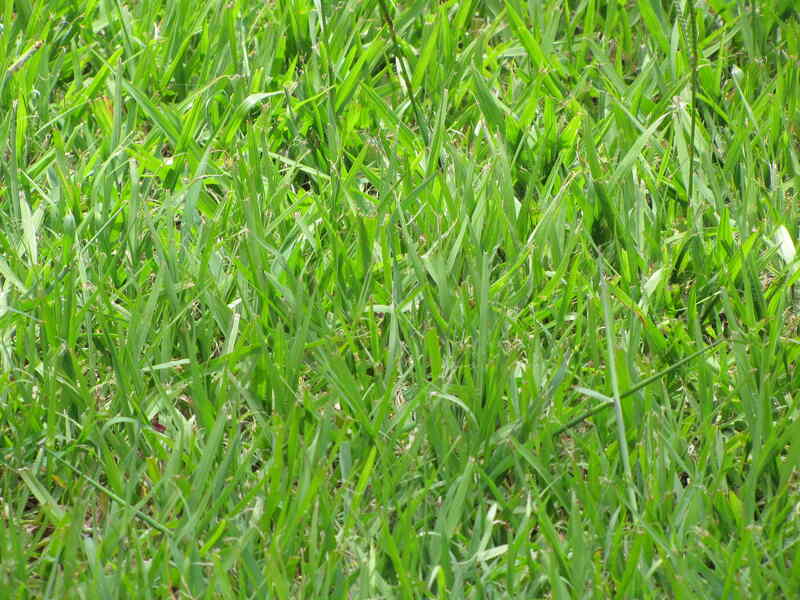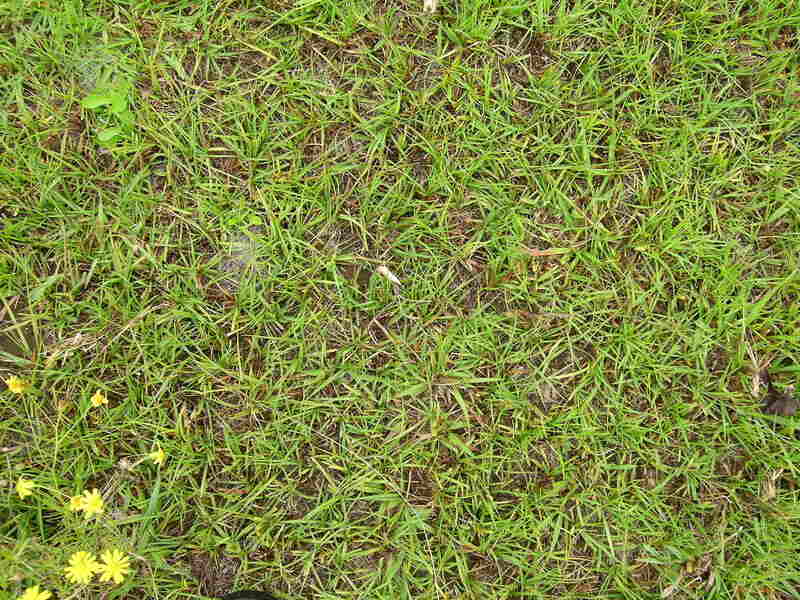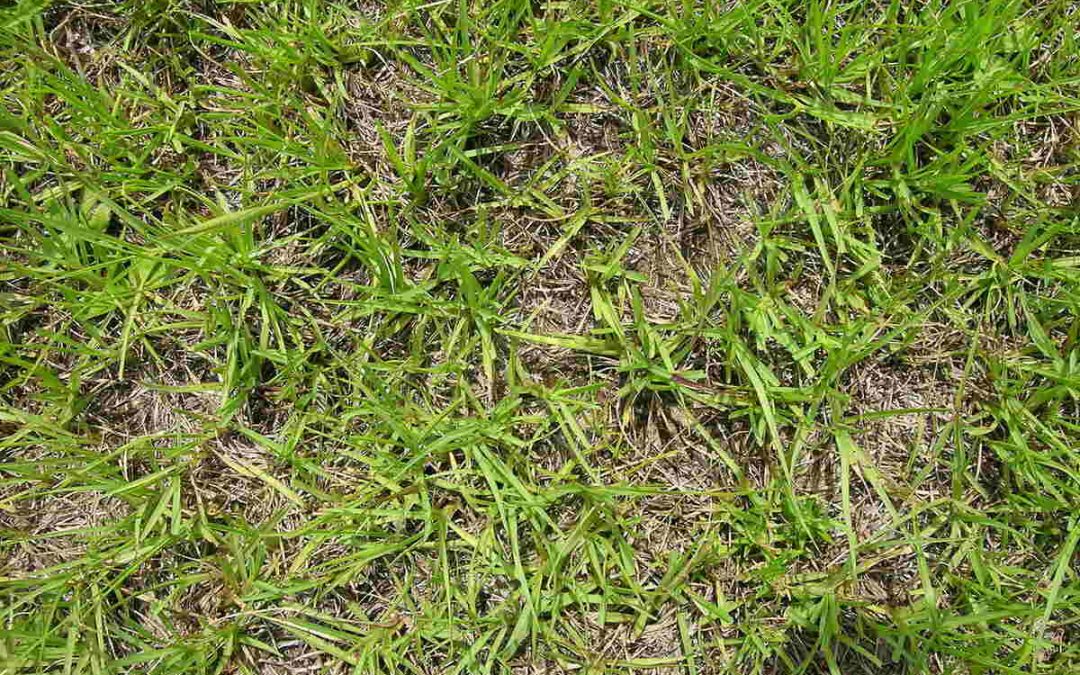I firmly believe any plant can be considered a weed if it’s growing somewhere it isn’t wanted. This includes even turfgrass like Bahiagrass. Some homeowners adore the low-maintenance needs of Bahiagrass when grown for a lawn, and others absolutely despise it when rogue rhizomes creep out of neighboring pastures into their yards.
If you’re firmly in the Bahiagrass-grass-is-trash camp, let’s dive into different ways to get rid of Bahiagrass in your landscape!
Whether it’s in your lawn or taking up residence in your vegetable garden or flower beds, we’ve got options for you. I will also offer non-chemical approaches to get rid of Bahiagrass if you’re looking for sustainable solutions.
Will Hand-Weeding Get Rid of Bahiagrass?
When you see Bahiagrass in your lawn or flower beds, the first instinct is to grab ahold of it and yank it out by hand. Manually pulling it out may work, but remember that it reproduces via rhizomes, so you have to remove the entire underground part of the plant, too. If you only hand-pull the top off, the rhizomes continue reproducing, sending out new grass shoots.
So, with this in mind, you should attack Bahiagrass with a multi-pronged approach, employing cultural practices and chemical or natural herbicides.
How to Use Chemical Herbicides to Get Rid of Bahiagrass

Photo Credit: eleonimages / Canva Pro / License
I understand if you’ve ever stood in the lawn chemical aisle at your local hardware or big box store feeling overwhelmed and dizzy by all the choices. There are shelves of different products claiming to control various weeds. And it is essential to pick the right one for the task.
Understanding Pre- Versus Post-Emergent Herbicides
Before we get into specific products, let’s talk about two types of weed killers and what sets them apart from one another: pre-emergent and post-emergent herbicides.
- Pre-emergent herbicides are applied before seeds have a chance to germinate. They work to interrupt growth after the seeds germinate, stopping initial leaves from forming or the primary root from growing. The sprout never pushes its way up and out of the soil.
- Post-emergent herbicides are applied after germination and target actively growing plants. They work by killing the foliage they come in direct contact with or moving through the vascular system to destroy the plant’s roots.
Pre-Emergent Herbicides
I try to use pre-emergent herbicides whenever possible, as it’s easier to stop weeds from germinating (and yes, I’m going to classify Bahia as a weed in this situation) than it is to get rid of them once they sprout. You have limited pre-emergent options if you have Bahia growing on your lawn.
- Atrazine and products containing atrazine are effective pre-emergent treatments in some lawns. According to Sid Mullis, the director of the University of Georgia Extension service office in Richmond County, the chemical is safe for actively growing centipedegrass and St. Augustine but should only be used on dormant Bermudagrass and Zoysia.
Please note that it’s imperative to read the product label thoroughly. Only use herbicide you know is safe for your grass type.
Post-Emergent Herbicides
Compared to pre-emergent products, you have many more options for post-emergent herbicides. However, care must still be taken to ensure you don’t harm your lawn. And be forewarned that you may need to apply these products more than once to control Bahia because of its deep rhizomes.
The following selective herbicides are labeled for use on specific turf types, so they won’t harm the intended grass but should tackle the Bahia infestation. Plus, they’ll likely also get rid of crabgrass and other broadleaf weeds.
- Metsulfuron-methyl is safe to use on Bermudagrass and Centipedegrass lawns.
- Sethoxydim and atrazine can be used on Centipedegrass.
- Imazaquin herbicides are okay for lawns with St. Augustinegrass, Zoysiagrass, and centipedegrass, but they’re not recommended for fescue grass.
- MSMA is safe for use on Bermuda and Zoysia but was banned for residential use after 2013.
- Imazaquin is safe for St. Augustinegrass, buffalograss, centipedegrass, or Zoysiagrass but shouldn’t be used around vegetable plants, berries, or fruit trees.
Bahiagrass is a little easier to control in flower beds or garden plots. While there is controversy surrounding glyphosate (commonly sold as RoundUp), it is an effective weed killer and works well when you are looking for something for spot treatment. Glyphosate is non-selective, killing anything it touches; be careful not to spray it when it’s windy or when the Bahia is close to other desired plants.
Cultural Practices to Get Rid of Bahiagrass

Photo Credit: Forest and Kim Starr / Flickr / CC BY 2.0
Beyond chemical treatment methods, you can implement some essential lawn care practices for the control of Bahiagrass.
Foster a Thick, Healthy Lawn With Fertilizer
Encouraging a healthy, lush lawn is the best way to prevent unwanted grasses and weeds. A thick, dense carpet of grass will naturally choke out unwanted Bahia trying to take hold.
Fertilize your lawn on a regular schedule based on the type of grass you’re growing. For most grasses, this will be at least twice per year. Bahiagrass has low nutrient needs, so regular lawn fertilization will hinder its growth and keep it from returning.
Cut Your Grass Regularly
Bahia spreads primarily through underground rhizomes but also puts out distinctive, Y-shaped seed heads. These seed heads disperse and further spread the unwanted grass when left alone. Mowing your lawn consistently—at the appropriate lawn mower height for your turf type—helps prevent any Bahia in your grass from going to seed and spreading.
When dealing with Bahia that has gone to seed, you should bag and dispose of your grass clippings versus letting them fall back on the grass.
Keep Your Grass Properly Watered
Keeping your lawn so it isn’t too dry is a fantastic way to discourage Bahia from growing. Bahia is revered for its drought tolerance and will quickly move into established turf if the soil is too dry and the existing grass is stressed.
Water your grass deeply, yet infrequently, several times a week. Aim to give it about one inch of water (total) over the course of a week, but this amount varies slightly based on the grass you’re growing and the soil conditions.
Seed Bald Spots Immediately
Bahiagrass is opportunistic and will take over empty space, including the bare spots in your St. Augustine or Bermudagrass lawn. To help prevent it from sneaking its way in, anytime you see bare spots in your grass, sow grass seed quickly and cover the soil with a layer of mulch. Growing new grass as soon as possible will help keep Bahia at bay.
Natural Ways to Get Rid of Bahiagrass

Photo Credit: Harry Rose / Flickr / CC BY 2.0
For those who want to veer away from traditional chemical control methods, you have a couple of options that may work. A quick caveat though: these methods typically have a lower success rate and take much longer to see results.
Homemade Vinegar Solution
Some people swear by using vinegar (scientifically known as acetic acid) as a weed killer. Mix one cup of white distilled vinegar, one cup of water, and a few drops of dish soap from under your kitchen sink. Shake the ingredients together and spray or pour it directly on the Bahiagrass.
The vinegar pulls water out of the plant, drying out the leaves and ultimately (hopefully) killing whatever you pour it on. This is why it’s essential only to spray it on weeds, making sure it doesn’t get on anything you want to keep.
I’ve tried this method myself and have gotten mixed results. I’ve found it works best if you apply it on hot, sunny days and then repeat it every five days or so.
Smother the Bahiagrass
If you have large Bahiagrass patches in your lawn or garden you want to get rid of, an effective way to tackle them naturally is to deprive the entire section of sunlight. Cover the Bahia with black plastic sheeting or large garbage bags, securing the corners so the covering stays in place. After a couple of weeks, everything under the plastic should be smothered out and dead.
Personally, I think this method is best for your garden and flower beds. If you use it on your lawn, you’ll also kill any other grass in the area.
Spread Corn Meal
Lastly, if you’re looking for an alternative pre-emergent method, you can apply corn gluten meal to your lawn. Use about 20 pounds of it per 1,000 square feet of grass for the best results.
Corn gluten meal has been used as an organic, natural pre-emergent herbicide for many years. Researchers at Iowa State University unintentionally discovered its pre-emergent properties in the early 1990s. When applied to the soil, it releases dipeptides, organic compounds that dry out seeds, so they have trouble sprouting.
FAQ About Weedy Bahiagrass
If you are looking for a chemical control option, you must carefully choose a product that considers Bahia a “weed” and kills it without damaging your turf. Some commonly used post-emergent herbicides include metsulfuron-methyl, sethoxydim, and imazaquin. Always read the product label and double-check that the herbicide is safe for the type of grass you’re growing.
The biggest problem with leaving Bahiagrass mixed in your turfgrass is its potential to spread and take over. If left unchecked, it could push out your desired turf, whether St. Augustine, Bermudagrass, Centipedegrass, etc. Plus, Bahia seed heads are unsightly and pop up quickly when left unmowed.
Centipedegrass is the best choice if you’re looking for a warm-season turf that naturally keeps Bahiagrass out. It forms a dense, thick carpet of lawn that will usually keep Bahiagrass from creeping in or choke out any existing plants.
When to Hire a Lawn Care Pro
Hopefully, these ideas will help get rid of any unwanted Bahiagrass in your lawn. Once you’ve removed it, we’ve got plenty of resources online to help you with grass and lawn care to keep it from returning. And if you ever need help with lawn weed control, lawn care experts are only a click away!
Main Image Credit: Harry Rose / Wikimedia Commons / CC BY 2.0

